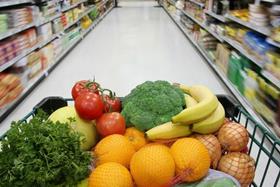
Australia’s vegetable industry has released its 2020 export strategy, pushing for a 40 per cent rise in vegetable exports by 2020.
The ‘Vegetable Industry Export Strategy 2020’, delivered by grower-owned body Horticulture Innovation Australia (Hort Innovation) alongside peak industry body for vegetable growers, Ausveg, has set a target of increasing the value of Australia’s vegetable exports to A$315m by 2020, with Ausveg aiming for exports to top A$400m by 2025.
“The Australian vegetable industry has a huge appetite for export growth and there is a lot of untapped potential there. Horticulture Innovation Australia is working with growers and Ausveg to do everything it can to drive this growth and develop a financially sustainable vegetable export sector,” John Lloyd, Hort Innovation CEO, said in a statement released 2 February.
The strategy outlines opportunities for Australian vegetable exports, including the growing middle and upper class consumers in Asia and the Middle East, and a demand for safe traceable foods, with Australian growers having the competitive advantage of producing quality, safe produce.
The major challenges in reaching these goals, the report said, is Australia’s lack of global price competitiveness, technical market access barriers and a lack of scale and continuity of supply.
“The Australian vegetable industry has invested significantly in export development to help growers successfully export fresh Australian vegetables. The development of these markets is critical to the long-term viability of the industry,” said Michael Coote, Ausveg export development manager.
“The strategy will ensure vegetable exports are treated as a long-term channel to market by delivering industry-specific export training programmes for growers, increasing the range of opportunities for growers to connect directly with overseas buyers and exploring product development and collaboration opportunities to determine the best products or business models for export success.”
Australia exported 209,871 tonnes of vegetables valued at A$227m in the 2015/16 financial year, according to data from the Global Trade Atlas and the Australian Bureau of Statistics, supplied to Fruitnet by Ausveg.
Carrots are Australia’s leading vegeable export, accounting for one-third of all vegetables exports, valued at A$81m in 2015/16.
Onion exports grew to A$28m, asparagus exports increased more than 25 per cent to A$25m, while broccoli/cauliflower exports increased to A$16m. Trade in celery has increased from A$2.6m to AUD$5.2m on the previous year.
“The largest market for Australian vegetable exports is Japan, which grew 13 per cent to be worth A$44m last year,” Coote told Fruitnet. “The key vegetable commodities exported to Japan include asparagus – up 19 per cent to A$19m, and onions – up 39 per cent to A$3.6m.”
Singapore is another major market for Australian vegetable exports, growing 30 per cent to A$43m off the back of increased shipments of carrots (up 20 per cent to A$11.5m), and broccoli/cauliflower (up 34 per cent to A$10m).
“The UAE has also grown 25 per cent to be a market worth A$36m, and New Zealand and Malaysia are also key export markets for fresh Australian vegetable produce,” Coote added.
“This growth in the export trade of fresh Australian vegetables is underpinned by the increasing demand in Asian and Middle Eastern markets due to growing affluence, a relatively stable and favourable exchange rate, and the export market development work being undertaken by Australian growers, Ausveg and [Hort Innovation] to promote Aussie produce overseas.”



